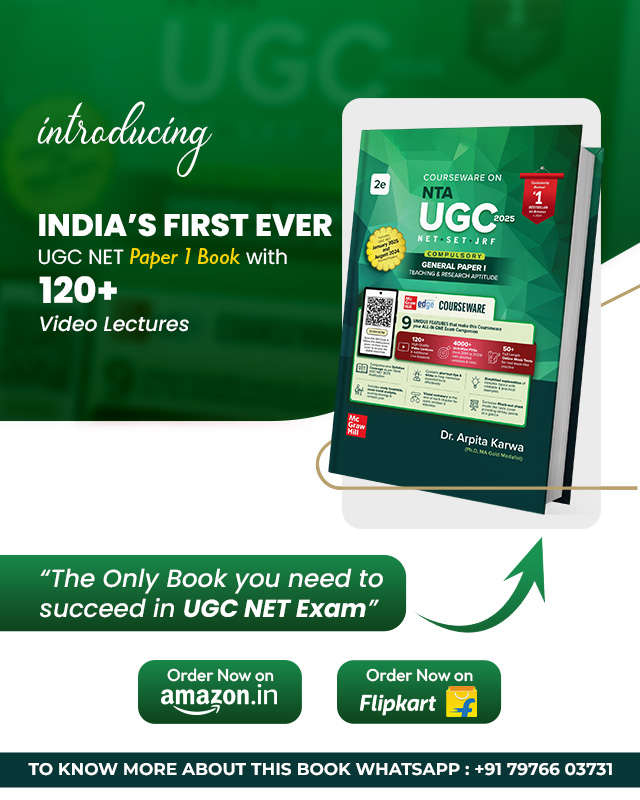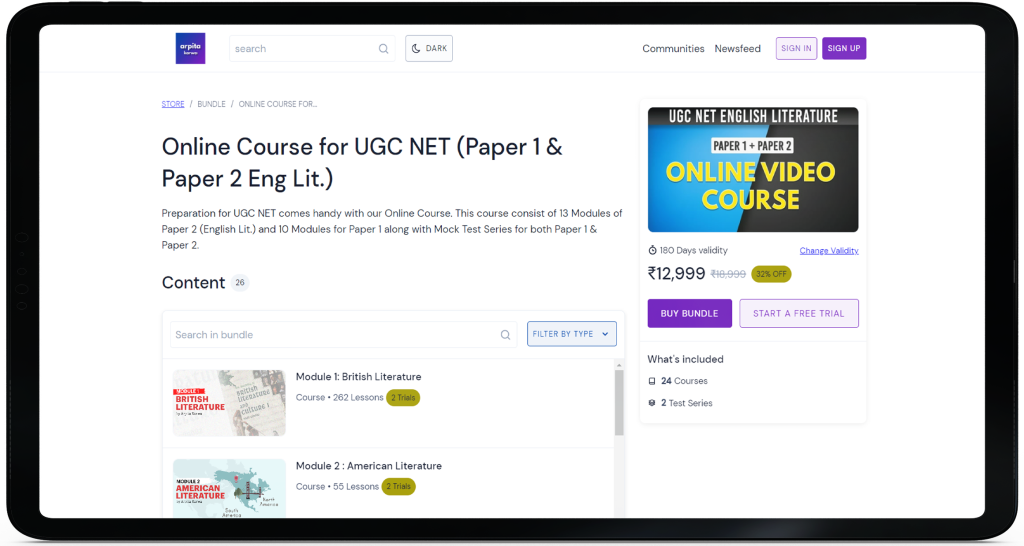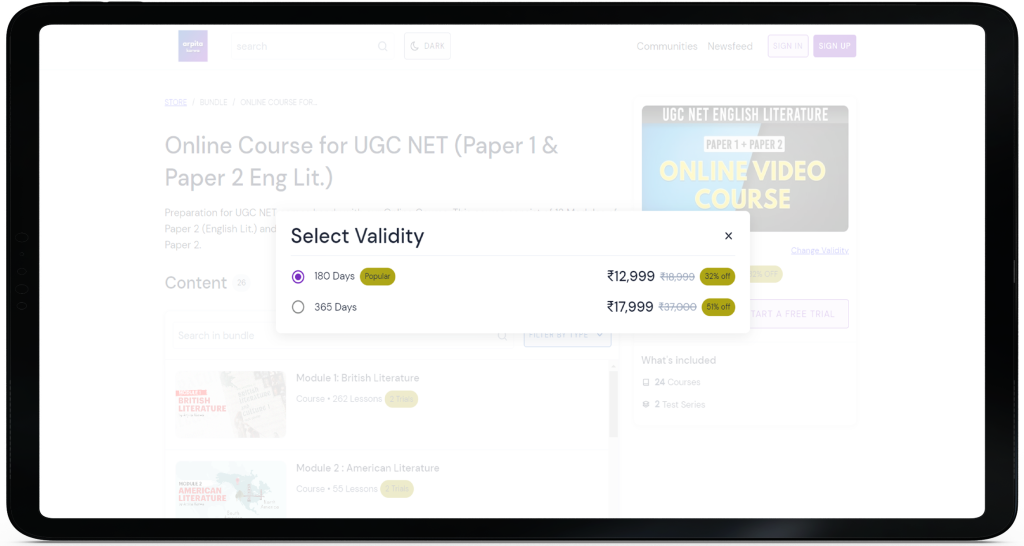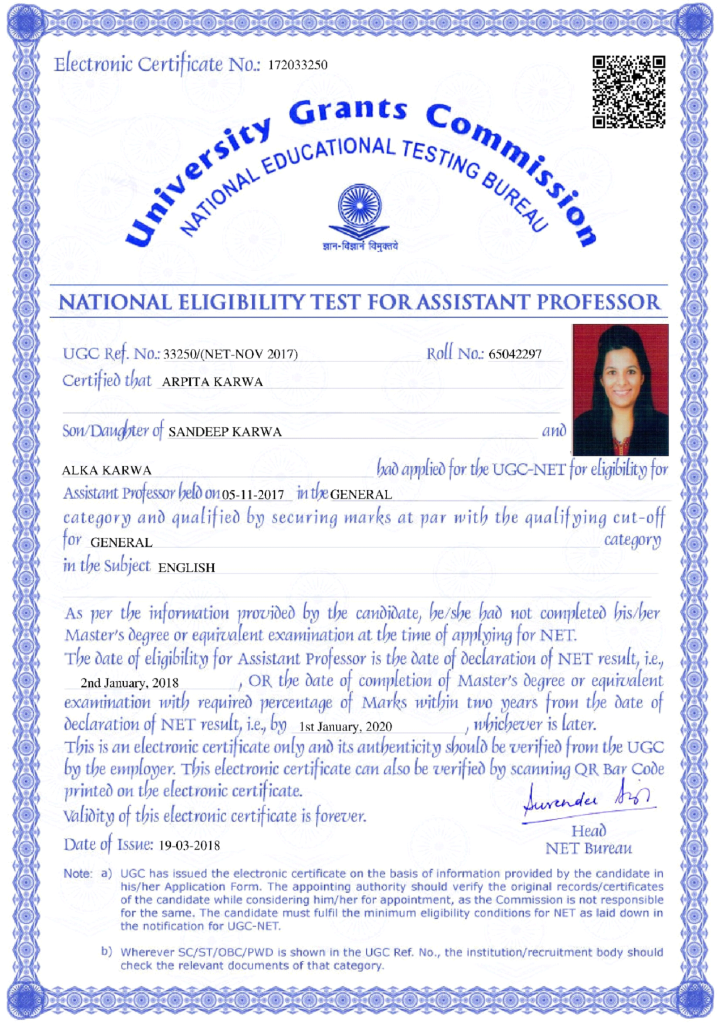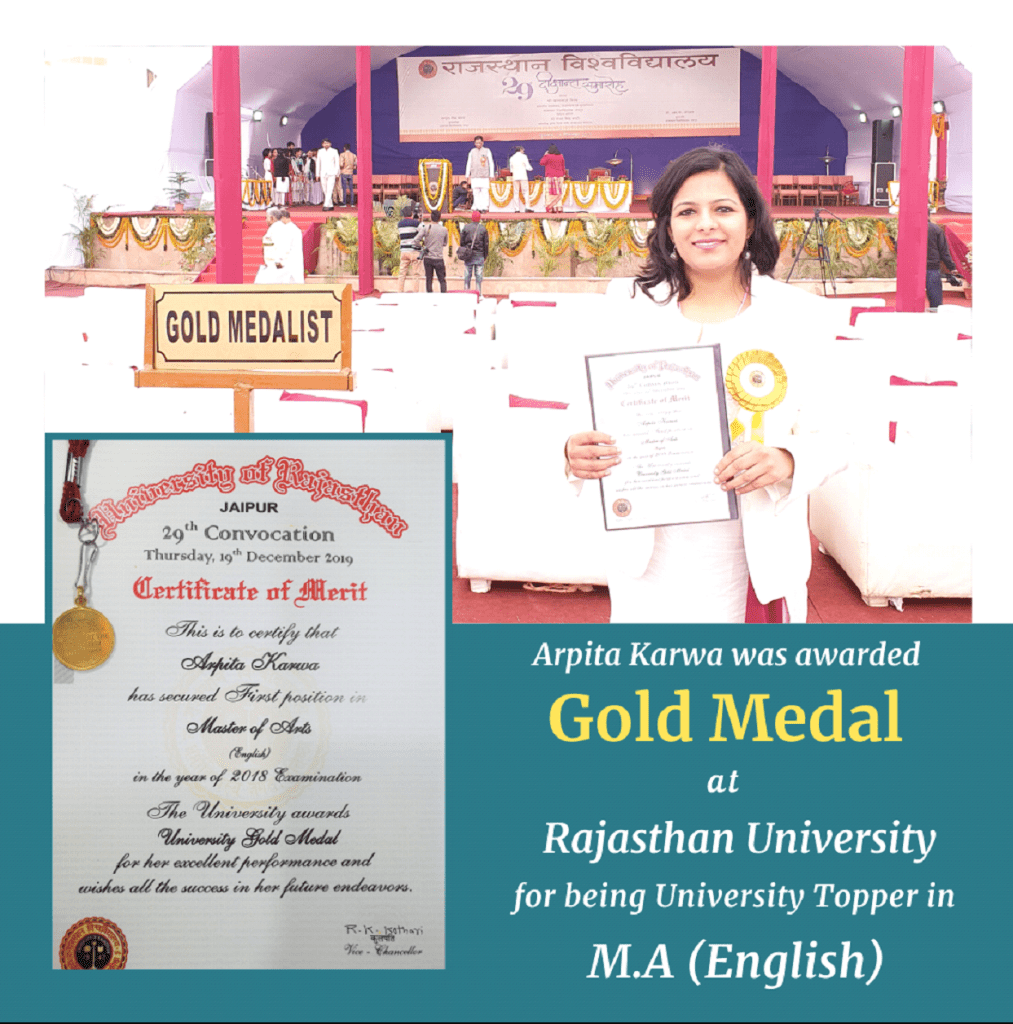Himachal Pradesh Set 2
June 20, 2023 2023-12-18 15:57Himachal Pradesh Set 2
Himachal Pradesh Set 2
Q.1) Arrange the following events in the history of English language in the chronological order:
The Norman con Quest: Anglo-Saxon invasions: The Scandinavian invasions: The Retreat of the Romans
(A) Anglo-Saxon invasions; The Norman con Quest: The Retreat of the Romans; The Scandinavian invasions
(B) The Scandinavian invasions: The Retreat of the Romans: The Norman con Quest: The Anglo-Saxon invasions
(C) The Anglo-Saxon invasions: The Retreat of the Romans: The Norman con Quest; The Scandinavian invasions
(D) The Retreat of the Romans: invasions: The Norman con quest: The Anglo-Saxon invasions: The Scandinavian
Q.2) Which of the following is not a language variation?
(A) Idiolect
(B) Sociolect
(C) Identic
(D) Dialect
Q.3) The two major structural patterns in language are
(A) Diachronic and Synchronic
(B) Syntagmatic and Paradigmatic
(C) Syntagmatic and Diachronic
(D) Supra segmental and Synchronic
Q.4) Who proposed the notion of LAD?
(A) Noam Chomsky
(B) Halliday
(C) Bloomfield
(D) Saussure
Q.5) Code switching refers to
(A) Mixing of H and L variations
(B) Mixing of first and second languages
(C) Mixing of speech and writing
(D) Mixing of old and contemporary words
Q.6) The Direct Method aims at
(A) Immersing the learner in the second language environment
(B) Using the first language in teaching the second language
(C) Using translation as method
(D) Using the lecture method
Q.7) Which poem by W H Auden is a satire against the totalitarian state?
(A) “The Unknown Citizen”
(B) “In Praise of Limestone”
(C) “Petition”
(D) “What is that Sound?”
Q.8) Which of the Upanishads is alluded to in the last section of The Waste Land?
(A) Isha
(B) Kena
(C) Brihadaranyaka
(D) Mandukya
Q.9) Now that my ladders gone must lie down where all ladders start In the foul rag and bone shop of the human Heart This is how
(A) Crazy Jane comments on her life
(B) Cuchulain summarizes his life
(C) The poet represents his poetic career
(D) Lady Gregory describes her life to W B Yeats
Q.10) The Major social class types portrayed in The Canterbury Tales are
(A) The Priestly Class
(B) The Nobility
(C) The Serfs
(D) The Trading Class Par
Choose the correct options:
(A) All the four
(B) 1, 2 and 4
(C) Only 1 and 2
(D) 1 and 3
Q.11) When as in silks my Julia goes then then (methinks) how sweetly flows that li Qu faction of her clothes These lines were written by
(A) George Herbert
(B) Robert Herrick
(C) Andrew Marvell
(D) John Donne
Q.12) She dwelt among the untrodden ways The word “ways” in this line refers to
(A) Lanes or roads
(B) Garden Paths
(C) Way of life
(D) Beliefs
Q.13) Earth’s the right place for love, Robert Frost makes this statement in
(A) Birches
(B) The Land was Ours
(C) Mending Wall
(D) The Road Not Taken
Q.14) For the caged bird sings of freedom the author of these lines is
(A) Sylvia Path
(B) Alice Walker
(C) Maya Angelou
(D) Jamaica Kincaid
Q.15) In the poem “This is a photograph of me’ by Margaret Atwood where does the poet say she is in the photograph?
(A) Behind the house
(B) Beside the lake
(C) In the lake, drowned
(D) Nowhere
Q.16) Match the following
List I
(a) “Nothing Gold Can Stay”
(b) “Self-Portrait”
(c) “Politics”
(d) “The Ball Poem”
List II
(1) W.B. Yeats
(2) John Berryman
(3) Robert Frost
(4) A.K. Ramanujan
CODES:
[1] (a)-4, (b)-3, (c)-1,(d)-2
[2] (a)-3, (b)-4, (c)-4, (d)-2
[3] (a)-3, (b)-1, (c)-1, (d)-2
[4] (a)-2, (b)-3, (c)-4, (d)-1
Q.17) Dr. Johnson refuted the arguments of an idealist philosopher by striking his foot against a stone Who was this philosopher?
(A) George Berkeley
(B) Shaftesbury
(C) Thomas Hobbes
(D) John Locke
Q.18): To enliven morality with wit and to temper wit with morality Which journal declared this as its intention?
(A) The Tatler
(B) The Spectator
(C) The Mirror
(D) The Rambler
Q.19) Edmund Burke made his great impeachment speech against
(A) Robert Clive
(B) Arthur Wellesley
(C) Warren Hastings
(D) William Pitt
Q.20) In the essay “Shooting an Elephant George Orwell offers a critique of
(A) Soviet Communism
(B) Imperialism
(C) Franco’s dictatorship
(D) Mussolini’s fascism
Q.21) What is the unusual title Graham Green gave to his autobiography?
(A) A Sort of Life
(B) An Unlived Life
(C) Some Life
(D) Halfa Life
Q.22) “Notes of a Native Son’ is an autobiographical essay which is considered very influential in the analysis of race the author is
(A) W E B Du Bois
(B) Richard Wright
(C) Henry Louis Gates Jr
(D) James Baldwin
Q.23) Good-Bye to All That is the autobiography of
(A) Robert Graves
(B) Ernest Hemingway
(C) Christopher Isherwood
(D) George Orwell
Q.24) The Man who Knew Infinity the book by Robert Kanigel was also made into a film It is about
(A) A German Philosopher
(B) A Tibetan Monk
(C) An early twentieth century mystic
(D) An Indian Mathematician
Q.25) Match the following
List I
(a) A Theory of Everything
(b) A Beautiful Mind
(c) The God Hypothesis
(d) Count Down
List II
(1) Richard Dawkins
(2) Amitav Ghosh
(3) Stephen Hawking
(4) Sylvia Nasar
CODES:
A. (a)-3, (b)-4, (c)-1, (d)-2
B. (a)-2, (b)-4, (c)-1, (d)-3
C. (a)-2, (b)-1, (c)-3, d)-4
D. (a)-3, (b)-2, (c)-4, (d)-1
Q.26) Teaching to Transgress is about
(A) Teaching post-coloniality
(B) Teaching the especially abled children
(C) Teaching as a political tool
(D) Liberation pedagogy
Q.27) Match the following
List I
(a) Kitchen sink drama
(b) Angry young man drama
(c) Comedy of Menace
(d) Absurd drama
List II
(1) The Caretaker
(2) Waiting for Godot
(3) Look Back in Anger
(4) A Taste of Honey
CODES:
A. (a)-4, (b)-3, (c)-1, (d)-2
B. (a)-3, (b)-4, (c)-1, (d)-2
C. (a)-4, (b)-3, (c)-2, (d)-1
D. (a)-2, (b)-4, (c)-1,(d)-3
Q.28) Which of the following constitute the Arnold Wesker Trilogy?
(A) Luther, Chicken Soup with Barley, Roots Jerusalem
(B) Chicken Soup with Barley, Roots, I’m talking about
(C) Chairs, The Caretaker, Roots
(D) Left-handed Liberty, Chicken soup with Barely Roots
Q.29) Who are the “rade Mechanicals in A Midsummer Night’s Dream?
(A) Quince: Tom: Bottom; Flute; Snipe; Starveling
(B) Quince; Snug: Bottom; Flute; Snout; Starveling
(C) Bottom: Tom: Flute; Starveling: Tim: Jack
(D) Quince; Bottom; Flute; Jack; Starveling: Snout
Q.30) Match the following
List I
(a) Jessica
(b) Emilia
(c) Viola
(d) Calpurnia
List II
(1) Twelfth Night
(2) Julius Caesar
(3) The Merchant of Venice
(4) Othello
CODES:
A. (a)-1, (b)-3, (c)-4, (d)-2
B. (a)-4, (b)-3, (c)-1, (d)-2
C. (a)-2, (b)-4, (c)-1, (d)-3
D. (a)-3, (b)-4, (c)-1, (d)-2
Q.31) Oh brave new world! Who is the character who exclaims this?
(A) Juliet in Romeo and Juliet
(B) Portia in The Merchant of Venice
(C) Miranda in The Tempest
(D) Cordelia in King Lear
Q.32) Good morning to the day: and next, my gold!” This line is spoken by
(A) Shylock
(B) Mosca
(C) Volpone
(D) lago
Q.33) The epilogue in Bernard Shaw’s Saint Joan
(A) Establishes Joan’s innocence
(B) Supports her punishment
(C) Mourns her failures
(D) Denounces her heresies
Q.34) What does the fourth tempter symbolise in Murder in the Cathedral?
(A) Greed for power
(B) Loss of faith
(C) Spiritual pride
(D) Promise of immortality
Q.35) Which play by J M Synge led to rioting?
(A) Riders to the Sea
(B) The playboy of the Western World
(C) In the Shadow of the Glen
(D) The Well of the Saints
Q.36) Eugene O’Neil’s play Long Day’s Journey into the Night is about
(A) The consequences of war
(B) Disintegration of a family
(C) American Puritanism
(D) The American Dream
Q.37) In This Gift of English Alok Mukherjee argues that
(1) English in India until recently was affiliated to Brahmanical hegemony
(2) The present class of students is increasingly from the ‘bahujansamaj’
(3) British literature continues to be the core of English studies in India
(4) English is no longer a language of power in India
(A) 1, 2 and 3 are correct
(B) 2 and 4 are correct
(C) 2, 3 and 4 are correct
(D) 1 and 4 are correct
Q.38) The Draft New Education Policy recommends English as the medium of instruction
(A) From the primary stage of learning
(B) Should not be introduced until the graduate (collegiate) level
(C) Should be optional, but students should be exposed to three languages
(D) Does not specify anything on this
Q.39) Who among the following was a supporter of English in Indian Schools?
(A) Charles Wood
(B) Savitribai Phule
(C) Lokamanya Tilak
(D) Hunter
Q.40) Identify the theorist who is not part of the group that was called “Western Marxists”
(A) Louis Althusser
(B) Walter Benjamin
(C) G.A. Cohen
(D) Lucien Goldmann
Q.41) Which of the following statements is/are not correct with regard to the Frankfurt School?
(A) The school applied methods of psychoanalysis and existentialism to analyse society and nation
(B) The school derived many of its social postulates from Kant, Hegel and
(C) Max Horkheimer was not a member of the Frankfurt school
(D) Budapest was the centre for their intellectual deliberations
(E) The school was critical of capitalism as well as Marxism and Leninism
Choose the correct option
(A) 1, 2 and 4
(B) 3 and 4
(C) Only 4
(D) 3, 4 and 5
Q.42) Identify the Marxist critical work that does not belong to the group
(A) Marxism and Literature
(B) Marxism and Literary Criticism
(C) The Country and The City
(D) The Long Revolution
Q.43) Louis Althusser’s notion of ‘interpellation’ refers to
(A) The interference of capitalists in the daily routine of the “base” in society
(B) The manifestation that occurs at the level of ‘superstructure to bring about repressive
(C) The strategy to deceive the people by giving them a feeling that they have a lot of choice when they have none
(D) The power of the economic base to control the individua
Q.44) Identify the theoretical approach that invites us to undertake a parallel reading of the literary and non-literary texts of the same historical period
(A) New Historicism
(B) Structuralism
(C) Dialectical Materialism
(D) Dialogical Materialism
Q.45) Who among the following defined postmodernism in the simplest terms as “incredulity towards metanarratives”?
(A) Habermas
(B) Lyotard
(C) Baudrillard
(D) Derrida
Q.46) Hyper reality refers to
(A) Extreme forms of reality that challenge our stereotypical understanding
(B) Capability of the human mind to distinguish the real and the absence of the
(C) Inability of consciousness to distinguish reality from simulation of reality
(D) Ultra tangible reality that challenges the fluidic and flickering nature of reality
Q.47) Analysis of symmetry, contrast and patterns in literature is a significant characteristic feature of
(A) Humanist Criticism
(B) Deconstructionist Criticism
(C) Reader Response Criticism
(D) Structuralist Criticism
Q.48) Match the following
List I
(a) Phonocentrism
(b) Logocentrism
(c) Aporia
(d) Transcendental Signified
List II
(1) Point of undesirability where the text undermines its rhetorical structure
(2) A term that denotes the privileging of speech over writing in the western thought
(3) Some that provides ultimate meaning since it would be the origin of origin
(4) Demonstrates the quest for a core, an essence, truth and center
CODES:
A. (1)-d, (2)-b, (3)-c, (4)-a
B. (1)-b, (2)-d, (3)-a, (4)-c
C. (1)-c, (2)-a, (3)-b, (4)-d
D. (1)-a, (2)-c, (3)-d, (4)-b
Q.49) Hyper reality refers to
(A) Extreme forms of reality that challenge our stereotypical understanding
(B) Capability of the human mind to distinguish the real and the absence of the real
(C) Inability of consciousness to distinguish reality from simulation of reality
(D) Ultra tangible reality that challenges the fluidic and flickering nature of reality
Q.50 Which of the following statements with regard to Lacan’s ‘Mirror Stage’ is not correct?
(A) This stage is also termed as the ‘Imaginary’ where there is no distinction self and the other between the
(B) Prohibitions and restraints begin at this stage associated with the figure of the father
(C) The child sees its own reflection in the mirror and understands itself as a unified being separate from the rest of the world
(D) At this stage the child enters into the language system
Q.51) Philip Sidney argues that
(A) The poet makes no literal claims of truth
(B) Poetry teaches virtue but differently
(C) Poetry does not provide knowledge
(D) Tragedy is not bound to history but to the laws of poetry
Choose the correct option
(A) 2 and 3 are correct
(B) 2 is correct
(C) 1, 2 and 4 are correct
(D) 2, 3 and 4 are correct
Q.52) He affects the metaphysics not only in his satire, but in his amorous verses’ Who said this?
(A) Dr. Johnson of Abraham Cowely
(B) Dryden of John Donne
(C) Drammond of Hawthornden of the metaphysical Poets
(D) T. S. Eliot of Ezra Pound
Q.53) According to Matthew Arnold the function of criticism
(A) is to see the object as it really is
(B) is to draw out the true meaning of the text
(C) to pass judgement on the text and the author
(D) is to compare and analyses
Choose the correct option
(A) only 1
(B) 2 and 3 is correct
(C) 3 and 4 are correct
(D) 1, 2 and 4 are correct
Q.54) TS Eliot argues that dissociation of sensibility is
(A) Reflected in the failure to integrate intellect and emotion
(B) Decline in ethical values
(C) Being enslaved by ideologies
(D) Excessive sentimentality
Q.55) Which novel by Charles Dickens did F R Leavis discuss in The Great Tradition?
(A) Oliver Twist
(B) Great Expectations
(C) Hard Times
(D) Dombey and Son
Q.56) In “The Two Uses of Language’ L A Richards describes
(A) The denotative and connotative uses of language
(B) The scientific and emotive uses of language
(C) Conventional and original uses of language
(D) Rhetorical and non-rhetorical use of language
Q.57) Which terms were given circulation by Mikhail Bakhtin?
(A) Heteroglossia; Dialogic; Carnival
(B) Dialogic; Carnival: Interpellation
(C) Dialogic; Heteroglossia; Residual
(D) Dialogic, Carnival: Object Correlative
Q.58) Cleanth Brooks argues that irony and paradox are characteristics of the language
(A) Only metaphysical poetry
(B) Only modernist poetry
(C) All poetry
(D) Only French symbolist poetry
Q.59) Who described the novel as ‘the bright of book of life”!
(A) Percy Lubbock
(B) E M Forster
(C) D H Lawrence
(D) Arnold Kettle
Q.60) According to Raymond Williams Culture as an ideal category
(A) Stands for a state or process of human perfection
(B) Emphasizes the significance of history in culture production
(C) Venerates the present
(D) Foregrounds the materiality of human experience
Q.61) Who among the following is not associated with Birmingham Centre for Contemporary Culture Studies?
(A) Stuart Hall
(B) Richard Hoggart
(C) Paul Willis
(D) Fredric Jameson
Q.62) Who is the founding editor of the reputed journal Cultural Studies?
(A) John Fiske
(B) Rita Felski
(C) Bill Ashcraft
(D) Benita Perry
Q.63) Which Marxist philosopher supplements the orthodox notion of “class struggle with alliance”?
(A) George Lukacs
(B) Antonio Gramsci
(C) Louis Althusser
(D) Terry Eagleton
Q.64) The theory of was of central importance to the development of Birmingham Centre for Contemporary Cultural Studies
(A) Literature
(B) Hegemony
(C) Democracy
(D) Tradition
Q.65) Stuart Hall considers popular culture
(A) Inferior to high culture
(B) As a site of resistance
(C) Mediocre
(D) Unworthy of Study
Q.66) Name the cultural critic who famously declared that “ordinary people are not cultural dopes”?
(A) Raymond Williams
(B) F R Leavis
(C) Stuart Hall
(D) E P Thompson
Q.67) What, according to Louis Althusser, are the examples of ideological state apparatuses?
(A) Family, school and church
(B) Family, police and church
(C) Family, community and culture
(D) Family, community and state
Q.68) Who is the author of an unfinished work Arcadex Project?
(A) Fredric Jameson
(B) Walter Benjamin
(C) Theodore Adomo
(D) Herbert Marcuse
Q.69) “Call me Ishmael” this is the beginning of the novel
(A) Moby Dick
(B) Types
(C) Bartleby the Scrivener
(D) Benito Cereno
Q.70) Which 18 century novels influenced the narrative style of Midnight’s Children?
(A) Tom Jones
(B) Tristram Shandy
(C) Moll Flanders
(D) Gulliver’s Travels
Q.71) Which of the following is not a Gothic novel?
(A) Frankenstein
(B) The Monk
(C) The Castle of Otranto
(D) Pamela
Q.73) Which character appears in two novels of James Joyce?
(A) Molly
(B) Finnegan
(C) Stephen Daedalus
(D) Leopald Bloom
Q.74) A famous novel by Albert Camus begins with a quotation from Daniel Defoe Name the work
(A) Moll Flanders
(B) Journal of Plague year
(C) Robinson Crusoe
(D) Captain Singleton
Q.75) In the early feminist novel The Awakening, the protagonist
(A) Walks out of home
(B) Moves out to Europe
(C) Is drowned in the Sea
(D) Returns to domesticity
Q.76) Ray Bradbury’s novel Fahrenheit 451 is about a dystopic society in which
(A) Books are burnt
(B) Books are completely re-written
(C) Books do not exist
(D) Books dictate and instruct humans
Q.77) In Margaret Atwood The Handmaid’s Tale
(A) Women enjoy political power
(B) Women’s reproductive powers are totally controlled
(C) Men treat women as equals
(D) Women are banished by the state
Q.78) Catch 22 by Joseph Heller is
(A) An anti-war novel
(B) A woman-centric novel
(C) An epistolary novel
(D) Graphic novel
Q.79) Examine the following Research Question “What are the effects of home and community environments on the learning of language structures and functions needed to succeed at school and at work?” Such a research enquiry would involve
(A) Experimental Approach
(B) Ethnographic Approach
(C) Inductive Approach
(D) Investigative Approach
Q.80) The ‘Scholar-Critic’ refers to
(A) A book on methods in literary research written by F W Bateson
(B) A phrase coined by Terry Eagleton to refer to a researcher engaged in the task of inquiring into subjective research
(C) A title of an international conference held in St Louis, the USA on devising new methods of research in humanities
(D) A term utilized to refer to a researcher engaged in archival research
Q.81) While we can never conclusively demonstrate “truth” through induction, we can challenge an assertion through the documentation of a single disconfirming instance This principle is termed as
(A) The principle of Research Breach
(B) The Contravening principle
(C) The Falsifications principle
(D) The disambiguation principle
Q.82) Postcolonial theory has opened up new areas of research in English studies by the analysis of
(A) Language
(B) Literary style and technique
(C) Knowledge, power and colonialism
(D) Structure of poems and plays
Q.83) Which of the following methods would be useful for research on popular reading in the colonial period?
(A) Archival method
(B) Structured interviews
(C) Close textual analysis
(D) Comparative method
Q.84) Which of the following is a seminal work of research in the domain of postcolonial studies?
(A) The Mirror and the Lamp
(B) The common Pursuit
(C) Of Grammatology
(D) Culture and Imperialism
Q.85) The British East India Company enacted the English Education Act in
(A) 1830
(B) 1835
(C) 1858
(D) 1857
Q.86) Which of the following is not a major document relating to teaching of English in India”
(A) Wood’s Dispatch
(B) Macaulay’s Minutes
(C) English Education Act
(D) The Hunter Commission Report
Q.87) Which of the following books does not deal with English Studies in India?
(A) Masks of Con Quest
(B) Lie of the Land
(C) This Gift of English
(D) The Intimate Enemy
Q.88) Which of the following does not belong to the group?
(A) Archaeology of Knowledge
(B) Genealogy of Sexuality
(C) Panopticon
(D) Semiology
Q.89) dopted English as an official State language? Which State in India among the following
(A) Goa
(B) Nagaland
(C) Punjab
(D) Kerala
Q.90) Which is the first book published in English by an Indian?
(A) The Travels of Dean Mahomed
(B) Rajmohan’s Wife
(C) Song of the Hindoostani Minstrel
(D) The Dance of Shiva
Q.91) One of the following is not the goal of the teachers who use Community Language Learning Method
(A) Using target language communicatively
(B) Encouraging students to learn about their language
(C) Motivating students to take increasing responsibility for their learning
(D) Not allowing students to learn from ope another
Q.92) Curran states, “Learning is personal” What could not be the implication of this in the context of Community Language Learning?
(A) Sharing and belonging between persons through language tasks
(B) Learners should be individualistic
(C) Learning needs to be based on mutual trust
(D) Learning need not be based on shared identity
Q.93) One of the following is not true with Total Physical Response method
(A) Facilitating students’ enjoyment through their leaming experience
(B) Reducing anxiety on the part of the students in their learning experience
(C) Facilitating students’ imitating verbal models
(D) Basing foreign language learning in the manner children learn their native language
Q.94) Which of the following plays deals with an incident in a cyber café?
(A) Wedding Album
(B) Broken Images
(C) Flowers
(D) Final solutions
Q.95) All events in James Joyce’s Ulysses happen on
(A) 16 June 1904
(B) 16 July 1904
(C) 17 January 1922
(D) 17 June 1922
Q.96) Who is the author of Writing Degree Zero?
(A) Michel Foucault
(B) Ja Q.ues Derrida
(C) Helen Cixous
(D) Roland Barthes
Q.97) Read the following poem and answer the four Questions given below (97-100)
The flame-red moon, the harvest moon
Rolls along the hills, gently bouncing
A vast balloon
Till it takes off and sinks upward
To lie on the bottom of the sky
Like a gold doubloon
The harvest moon has come
Booming softly through heaven like a bassoon and the earth replies all night, like a deep drum
So, people can’t sleep
So, they go out where elms and oau trees keep
A kneeling vigil, in a religious rush the harvest Moon has come!
And all the moonlit cows and all the sheep
Stare up at her petrified, while she swells Filling heaven, as if red hot, and sailing Closer and closer like the end of the world
Till the gold fields of stiff wheat
Cry we are ripe, reap us and the rivers sweat from melting hills
(A) Only sound and colours
(B) Only visual images
(C) Colour and sound and visual images
(D) Visual and tactile images
Q.98) Why can’t the people sleep?
(A) Because of the booming sounds
(B) Because of the awesome beauty of the Moon
(C) Because the wheat are crying
(D) Because the cows and sheep are not moving
Q.99) What is a ‘kneeling vigil”?
(A) Prayer to be saved
(B) Prayer to the rising Moon
(C) The trees seem to be praying on their knees
(D) There is a religious calm
Q.100) The mood and the atmosphere of the poem is
(1) Of sensuous richness
(2) Awe and fulfilment
(3) Fruition and ripeness
(4) Unknown fear
Choose the correct options:
(A) 1 and 2 are correct
(B) 1, 2 and 3 are correct
(C) 2 and 4 are correct
(D) Only 1 and 4 are correct






